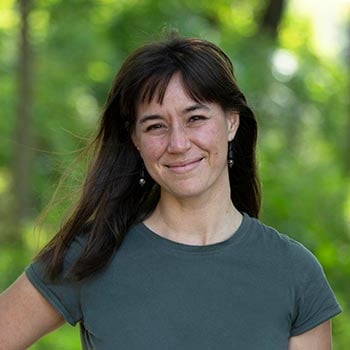One year ago, few would have predicted that grocery stores would ration basic commodities like flour. Or that families would wait in mile-long lines at food banks while farmers plowed produce back into fields. While experts have long argued that our food production and distribution methods are unsustainable, the COVID-19 pandemic exposed the fractures in our food system to many for the first time.
It’s time to reimagine how we grow, process, move, and package our food. We’d argue that this transformation is already underway. The United Nations launched a global food systems summit to transform the way the world produces and consumes food. In tandem, Resonance and the Platform for Accelerating the Circular Economy (PACE) introduced a Circular Economy Action Agenda for Food with ten calls-to-action aimed at catalyzing change where it is most needed now.
Resonance Strategic Partnerships Manager Seth Olson helped lead the development of the Action Agenda. Below, we invited him to share insight on the circular economy's role in delivering food system transformation.
Q&A with Seth Olson, Strategic Partnerships Manager
What are some examples of the hidden environmental and societal costs of the current food system?
A: The global food system's hidden costs are massive: $12 trillion each year, which is $2 trillion more than its market value. It’s pretty jarring to peel those costs away. Environmentally, conventional farming practices have eroded our soil to the point that we must replace nutrients to get decent yields. The eroded soil can’t absorb water during flood events or sequester carbon from the atmosphere. And because chemical inputs have killed off so many pollinators, we’re literally trucking around colonies of bees in order to grow our food. In lower- and middle-income countries, people slash and burn forests to make room for farms. All those emissions go into the air, and fewer trees mean less carbon is pulled back out.
Societally, the health costs of the food system are just as consequential. Many of these costs are interlinked with environmental ones: rates of asthma and other respiratory diseases, for example, are higher in areas where slash-and-burn techniques are used. Low-nutrient foods are also linked to a growing global diabetes epidemic. Food loss and waste is another huge cost: $940 billion in food is lost and wasted annually as people go hungry. Meanwhile, the rotting food emits methane, a greenhouse gas that’s 84 times more potent than carbon dioxide.
How will circular economy principles help address these costs?
A: The circular economy employs three principles: (1) design out waste and pollution, (2) keep materials in use, and (3) regenerate nature.
Regenerative agriculture can replace traditional agricultural practices to protect and restore natural ecosystems. It removes the costs associated with compensating for poor soil quality. And while we need more research linking soil health to human health, a circular diet is likely healthier for individuals as well as the planet. Further, by reframing “waste” as “commonly wasted materials,” we see opportunity for new innovative products and business models to keep these materials in use.
Circular economy principles can help businesses use systems thinking to design sustainability initiatives to address multiple, overlapping impact objectives. For companies, circularity is a fantastic framework for designing sustainability initiatives that maximize social, environmental, and economic benefits.
As Strategic Partnerships Manager at Resonance, how are you working across sectors to promote the circular economy transition?
A: In collaboration with PACE, we recently developed the Circular Economy Action Agenda for Food, which lays out three overarching objectives to transition our food system to a sustainable future. These objectives are that (1) food is produced in ways that regenerate nature, (2) food isn’t lost or wasted, and (3) commonly wasted resources are used productively. The agenda also highlights ten key areas where public, private, and civil society organizations can collaborate and act.
More generally, in my role at Resonance, I help clients articulate the value of circular economy business practices. Within the food system, there are clear business cases and arguments for transitioning to circular strategies. Companies have the potential to significantly reduce costs and find new revenue streams. But transitioning to circular principles also helps companies streamline workflows to drive greater impact toward sustainability targets related to climate change, sustainable sourcing or packaging, and sustainable agriculture.
Where is private sector leadership and action most urgently needed to transition our food system?
A: The top priority is investing in the prevention of food loss and waste. I can’t stress enough that the scale of all this is tremendous. If food loss and waste were a country, it would be the third-largest emitter of greenhouse gases after the U.S. and China. Its $940 billion price tag is higher than the Netherlands’ total GDP. The good news is that the World Resources Institute has shown a 14x return on investment for companies that invest in food waste prevention. There’s a clear business opportunity.
Additionally, we can also increase the resilience of food value chains by designing new infrastructure to prevent food loss and waste. This could be anything from public-private partnerships to build roads or scale cold chains that run on renewable energy to private sector-driven logistics innovation to keep materials in use.
The second priority is to take a farmer-centric approach to regenerative and sustainable agriculture. How do we ensure that farmers can make a decent living while improving the environment? One example is for companies to invest in long-term relationships with farmers rather than transactional annual contracts. Multi-year contracts enable farmers to gain access to finance that can further strengthen their farms as well as the resilience and productivity of company value chains.
Governments can collaborate with the private sector on food systems, too, by changing agricultural subsidies to support nature-positive, nutritious food production, and shift the narrative to investing in rural livelihoods. Farmers can and should be paid to adopt regenerative practices and capture carbon. The framing should be about income for farmers rather than simply placing more demands on them.
What advice do you have for businesses interested in transitioning to circular practices?
A: For inspiration, look at others in your industry and adjacent industries. The PACE community is full of excellent examples. The European context is the most mature, but innovative circular models are popping up all over the world. Indigenous practices are also hugely inspiring. Circularity isn’t just a technology solution; there is immense value to gain from traditional and indigenous practices.
Once you’re grounded in the concept and potential applications, you need to do two things to get started: shift your mindset and shift the way you design. Stop thinking about waste and start thinking about materials that are commonly wasted. In this way, you begin to recognize that everything has value. Many people come into the circular economy thinking about recycling, but you need to move the process much further up the value chain. Incentivize designers—for company products and processes—with new design criteria that set you on the path toward more circular business practices.
Once your organization makes these two shifts, the wheels start to move, and people get excited. You’re better able to articulate how the circular economy will achieve business value and your various sustainability initiatives, whether it’s through efficiency, new business models, products, or revenue. But the biggest thing is just to get started. Systems transformation can be complicated and overwhelming, so start small. Most companies already have sustainability commitments and know where they want to go—the circular economy is a pathway to get there.
Interested in finding out more about how your company or organization can deploy circular economy principles for a more productive, more sustainable food system? Check out the ten calls-to-action in the Circular Economy Action Agenda for Food and reach out directly to Seth Olson to discuss further.


